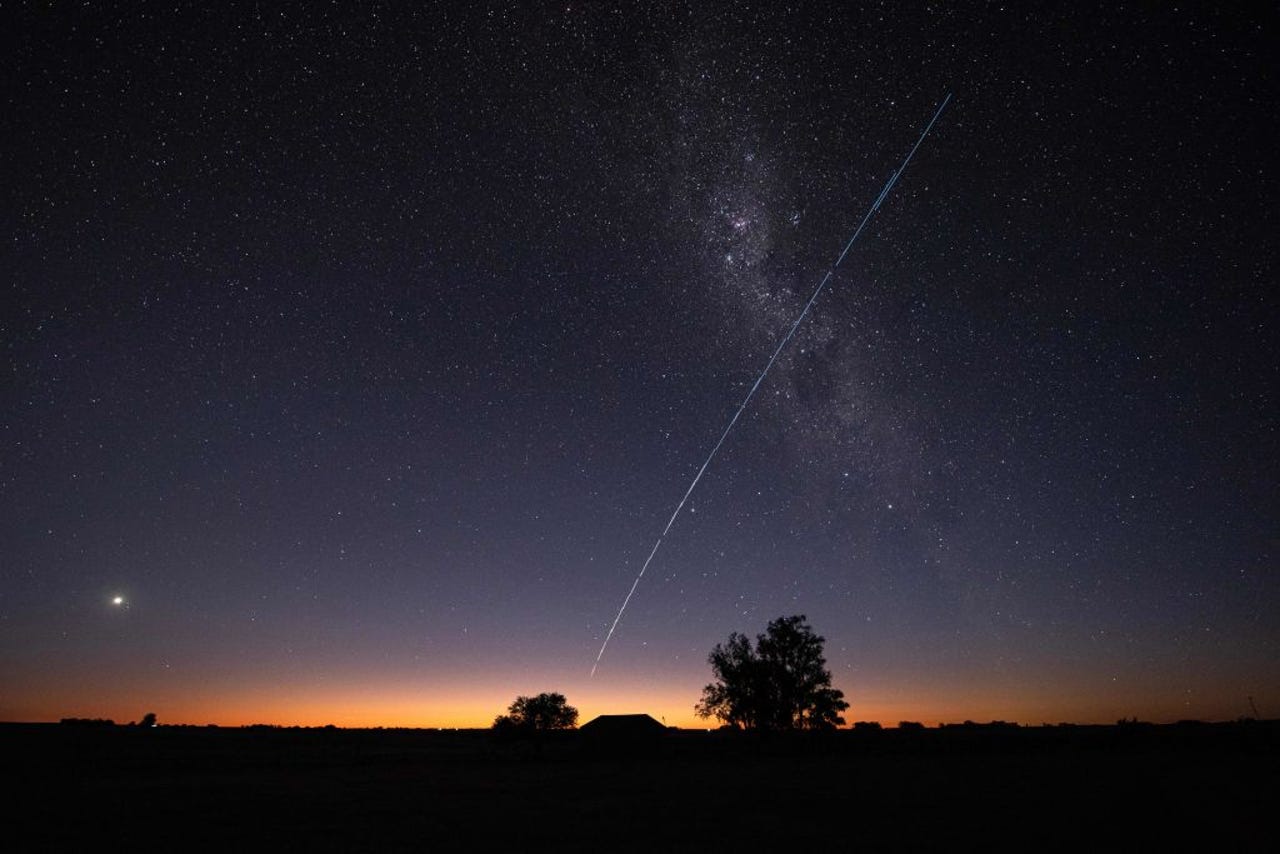SpaceX launches first Starlink satellites to provide cell service in remote areas


A new effort to eliminate the frustration of dead zones for cellular phones has just taken flight. On Tuesday, Elon Musk's SpaceX lit the fuse on a Falcon 9 rocket outfitted with the first set of Starlink satellites aimed at providing cellular service in remote areas in the US and across the world. Using T-Mobile's wireless network technology, the six satellites are designed to beam cellular signals from space directly to mobile phones.
Also: The best satellite phones you can buy: Expert tested and reviewed
"The six Starlink satellites on this mission with Direct to Cell capability will further global connectivity and help to eliminate dead zones," SpaceX said in a post on X, formerly Twitter.
Live-streamed and available for replay at SpaceX's website, the launch went off without a hitch, placing the six satellites in low-Earth orbit. The next challenge is to test the satellites and the cellular coverage to see how they fare in real-world, or real-space, conditions.
In touting this first step, T-Mobile explained that more than half a million square miles of the US and large areas of the ocean are inaccessible by terrestrial cellular coverage due to terrain limitations and other factors.
The goal of direct-to-cell satellite coverage is to resolve the problem of dead zones in remote areas and eliminate the need for people to carry around pricey satellite phones. For the latter, T-Mobile said that customers would be able to find a connection anywhere they can see the sky and, in most cases, use their existing phones.
The technology sounds like it could solve the dilemma of dead zones even in areas with existing cellular coverage. But that's not necessarily the case, according to Musk.
Also: This $300 tiny satellite communicator impressed me during an off-grid adventure
"This will allow for mobile phone connectivity anywhere on Earth," Musk said in a post on X. "Note, this only supports [around] 7Mb per beam and the beams are very big, so while this is a great solution for locations with no cellular connectivity, it is not meaningfully competitive with existing terrestrial cellular networks."
Initially, the coverage from the satellites will be limited to text messaging. But voice and data coverage as well as Internet of Things connectivity are expected to ramp up as soon as 2025.
Though the coverage on this first mission will come from T-Mobile, the door is open for other wireless providers to get in on the action. Currently, several other carriers are working with Starlink to tap into the direct-to-cell technology. These include KDDI in Japan, Optus in Australia, One New Zealand Group in New Zealand, Rogers Communications in Canada, and Salt Mobile in Switzerland. Providers interested in hopping on board can learn more about the initiative at Starlink's Direct to Cell website.
Not to get left behind in this new type of space race, AT&T has partnered with satellite maker AST SpaceMobile. Using a satellite in low-Earth orbit, the two companies managed this past April to pull off an impressive feat -- namely, making a two-way phone call via the satellite -- on a regular, everyday Samsung Galaxy S22 smartphone.
Also: The best phones we've tested, including foldables and budget picks
Verizon Wireless has been working with Amazon's Project Kuiper to also bring coverage to remote areas through low-Earth orbit satellites.
Even some smartphone makers have been getting their feet wet with satellite coverage. For users of its Phone 14, 14 Pro, 15, and 15 Pro, Apple offers an Emergency SOS via satellite feature through which you can send a text to emergency services in areas without cellular or Wi-Fi coverage.